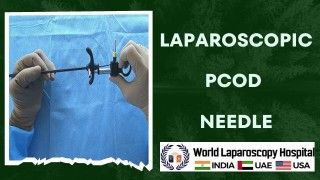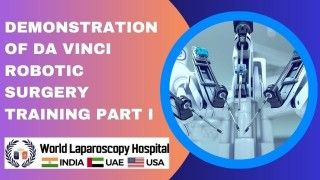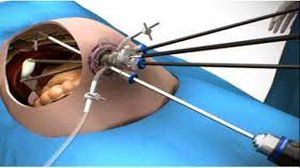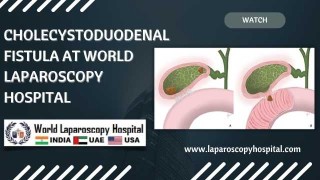A Comprehensive Guide to Mastering Abdominal Access in Laparoscopic Surgery
Add to
Share
1,459 views
Report
2 years ago
Description
Introduction: Laparoscopic surgery has revolutionized the field of surgery, offering numerous advantages over traditional open procedures. Among the critical components of successful laparoscopic surgery is the mastery of the abdominal access technique. This technique, when executed with precision, allows surgeons to enter the abdominal cavity safely and efficiently, paving the way for successful surgical outcomes. In this essay, we will delve into the intricacies of mastering abdominal access in laparoscopic surgery, exploring the importance of technique, the steps involved, and the benefits it brings to both surgeons and patients. The Significance of Technique: The success of any surgical procedure heavily relies on the surgeon's expertise and the mastery of specific techniques. Abdominal access in laparoscopic surgery is no exception. This technique involves the careful insertion of trocars or ports into the abdominal wall, providing access for the laparoscopic instruments. The precision and accuracy with which this is accomplished significantly impact the overall success of the surgery. A well-executed abdominal access technique minimizes the risk of complications such as organ injury, bleeding, or infection, and facilitates optimal visualization and maneuverability during the procedure. Mastering the Steps: Mastering the steps of the abdominal access technique is a crucial aspect of becoming a skilled laparoscopic surgeon. The process typically involves the following key steps: Patient positioning: Positioning the patient appropriately is vital for accessing the desired abdominal region. Factors such as patient comfort, surgical exposure, and ergonomic considerations are taken into account. Creating pneumoperitoneum: Pneumoperitoneum, the insufflation of carbon dioxide gas into the abdominal cavity, is crucial for providing adequate working space during laparoscopic surgery. This is commonly achieved by introducing a Veress needle or using an open or closed technique. Trocar insertion: Trocars serve as portals for the insertion of laparoscopic instruments into the abdominal cavity. The number and location of trocars depend on the specific procedure being performed. The surgeon must carefully choose the entry points, considering anatomical landmarks and potential risks. Visual confirmation and instrument placement: Once the trocars are inserted, the surgeon confirms their correct placement through visualization using a laparoscope. The laparoscopic instruments are then introduced through the trocars, enabling precise manipulation and dissection within the abdominal cavity. Benefits for Surgeons and Patients: Mastering the abdominal access technique in laparoscopic surgery offers numerous benefits for both surgeons and patients. For surgeons, it enhances their surgical skills and confidence, allowing them to perform complex procedures with greater precision. The ability to enter the abdominal cavity safely and efficiently reduces the risk of complications, resulting in improved patient outcomes. Moreover, a proficient abdominal access technique enables shorter operative times, decreased blood loss, and reduced postoperative pain, leading to faster recovery and shorter hospital stays for patients. The Abdominal Access Technique in Laparoscopic Surgery is a comprehensive guide designed to empower surgeons with the knowledge and skills necessary to achieve precision and optimal outcomes in minimally invasive procedures. This resource offers a step-by-step breakdown of the technique, emphasizing the importance of proper patient positioning, creating pneumoperitoneum, trocar insertion, and instrument placement. By mastering the abdominal access technique, surgeons gain the ability to safely and efficiently enter the abdominal cavity, reducing the risk of complications and enhancing surgical visualization and maneuverability. This guide highlights the significance of technique in achieving successful laparoscopic surgeries and explores the benefits it brings to both surgeons and patients. Surgeons who study and implement the principles outlined in this guide can elevate their surgical proficiency, enhance their confidence, and effectively perform complex procedures with precision. Moreover, by ensuring accurate trocar placement and instrument manipulation, surgeons can reduce operative times, minimize blood loss, alleviate postoperative pain, and contribute to shorter hospital stays for patients. Precision Through Technique: A Comprehensive Guide to Mastering Abdominal Access in Laparoscopic Surgery is an invaluable resource for surgeons seeking to improve their laparoscopic skills and deliver optimal patient care. With its emphasis on technique and its potential impact on surgical outcomes, this guide serves as a gateway to unlocking excellence in the field of laparoscopic surgery. Conclusion: The mastery of the abdominal access technique is an essential aspect of becoming a proficient laparoscopic surgeon. Through meticulous patient positioning, precise trocar insertion, and accurate instrument placement, surgeons can ensure a safe and successful entry into the abdominal cavity. This comprehensive guide has highlighted the importance of technique in achieving surgical precision and the numerous benefits it brings to both surgeons and patients. By dedicating time and effort to mastering this technique, surgeons can elevate their skills, enhance patient outcomes, and contribute to the advancement of laparoscopic surgery as a whole.
Similar Videos






